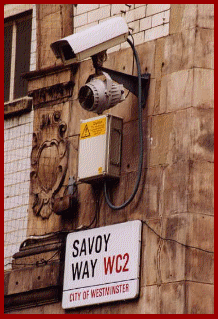| |||||||||||||||||||||||||||||
Welcome to the | |||||||||||||||||||||||||||||
 | |||||||||||||||||||||||||||||
 | |||||||||||||||||||||||||||||
Information on a wide range of housings, | |||||||||||||||||||||||||||||
Sounds easy doesn't it, and yet there are still a number of very obvious and fundamental mistakes which installers and specifiers make, on a regular basis. For this section of the site, Doktor Jon will consider the implications for maintaining temperature, controlling humidity and dealing with draughts. If we start with the basics first, any camera that is going to be exposed to the elements needs to be well protected. If the camera is placed in an environmental (weatherproof) housing, it should be suitably rated to resist the very worst that mother nature can throw at it. There are loads of very well made camera housings on the market, but whilst many provide high levels of protection against rain and dust storms, they can themselves be extremely difficult for a maintenance engineer to get into, particularly if they are 20 metres up the side of a building, hanging on by their finger tips (if you haven't tried it ..... you really haven't lived!). Most housings will include a thermostatically controlled heating element (check that it is suitable for the local supply voltage), which will help to maintain the internal housing temperature, and keep the window free from condensation. In extreme cold weather conditions, an uprated or secondary heat source may well be required. Do make sure the housing is at least fitted with a small internal circulating fan, which helps to cool the camera and reduce the risk of 'hotspots' on the internal printed circuit boards. Also if the camera is to be positioned in direct sunlight, consider having a second outer sunshield which will help to reduce the solar radiation reaching the housing itself. Even in relatively mild climates, there are two very common mistakes which are just downright silly. Firstly painting the housing any dark colour, is guaranteed to cook the camera,even in occasional summer sunshine. Likewise, placing a nice hot Infra Red lamp under the housing, is enough to make Doktor Jons blood boil .. and the camera. All support brackets and Pan & Tilt heads must be capable of supporting the entire weight of the static load, both under high wind conditions, and indeed violent snow storms. An extra 2 or 3 kilos of snow and ice sitting on top of the housing with a high wind loading, may just result in some quite stunning views ....of the ground below. | |||||||||||||||||||||||||||||
 | |||||||||||||||||||||||||||||
IMPORTANT: No material may be reproduced, copied or redistributed from this site, © doktorjon.co.uk 2004 - 2008 Homepage...:...Gateway...:...Technical Gateway....:....Quickfind Index....:....Equipment Directory | |||||||||||||||||||||||||||||

